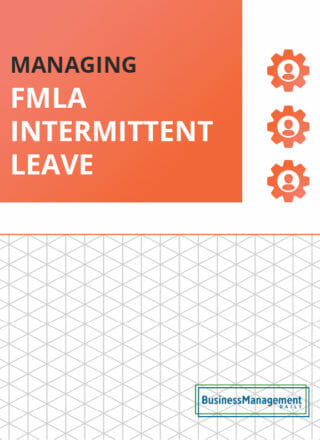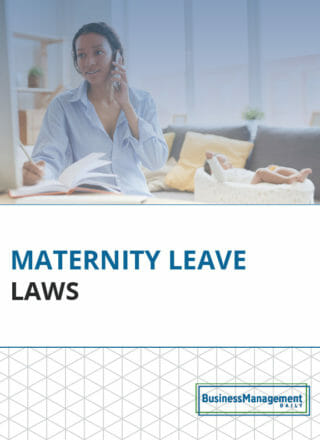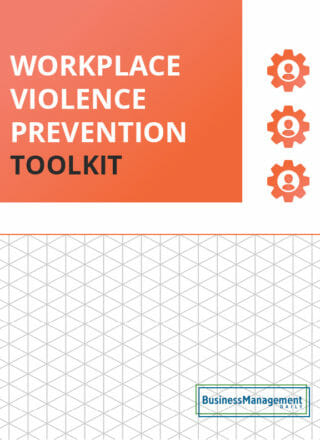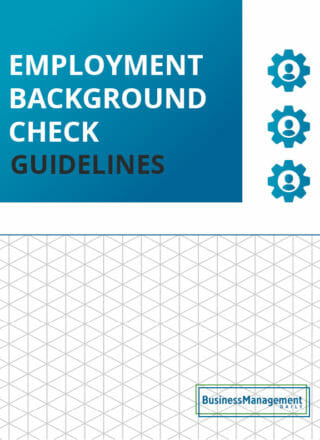
The Family and Medical Leave Act (FMLA) has been in the news quite a bit recently due to its close ties to ongoing COVID relief. With constantly changing rules and regulations coming out of Washington, it’s hard to know what is and isn’t ok. After all, FMLA wasn’t simple before COVID and it’s even less so now.
Despite this, ignorance is not a sound legal defense and employers need to stay up to date on current rulings. Otherwise, they could find themselves on the wrong side of an FMLA lawsuit, even if their actions were well-intentioned.
So let’s take a look at the current state of affairs and 3 recent cases that shine a light on FMLA law.
Mandated federal paid leave under the Families First Coronavirus Relief Act (FFCRA) ended December 31, 2020. The FFCRA required employers to provide paid time off for many COVID-19-related reasons. These included time to get tested, treated, and recover. It also included a paid and limited FMLA benefit when caring for children whose schools or daycares closed. The FFCRA was the first paid FMLA leave authorized by Congress.
Two other COVID-related relief acts do allow employers to offer voluntary FFCRA leave. Employers that do will receive a tax credit to cover the complete cost in most cases. The latest, American Rescue Plan Act (ARPA), extends the credits for leave through September 30, 2021. It also adds a new type of COVID-19 leave for employers that choose to provide it. Employers will get tax credits for providing paid time off to get vaccinated and to deal with vaccination side-effects.
In addition, employees who already used their leave received a new bank of time April 1, 2021. This applies to the 10 days of Emergency Paid Sick Leave (EPSL). Again, this only applies if the employer voluntarily provides the leave in order to collect the corresponding tax credit. Finally, the total credit available has increased by $2000 for a total of $12,000. This is to account for the additional ten days of EPSL leave employers may voluntarily provide.
What is unclear is whether the legislation provides a new pot of Emergency Family and Medical Leave (EFML) and credits. The IRS has not yet said. Nor is it clear if employers can provide a lesser amount of leave and request a lower tax credit. For example, can an employer limit EFML to six weeks rather than twelve? It’s also unclear whether employers who provide the new leave can count it against traditional FMLA leave. They were able to under the original legislation (FFCRA) but the ARPA doesn’t specify.
Bottom line: Extended COVID-19 related leave is voluntary. Employers must stay alert to IRS and DOL interpretations if they choose to provide leave and take tax credits.
Every year, lawyers representing workers find new ways to test the limits of the FMLA. Sometimes, these efforts succeed and employers have to adapt their practices to accommodate new interpretations. Other times, the efforts fall flat and courts soundly reject them. When that happens, employers can rest easy that their current policies won’t invite lawsuits. Here are some of the most recent highlights to be aware of.
The Massachusetts Supreme Judicial Court, in a case interpreting the FMLA, upheld a large jury award against an employer. The jury awarded over $1,332,000 after the employer, the Massachusetts Water Authority, fired an employee. The jury concluded that the employer retaliated against the worker when he returned from leave. The worker also said he would take FMLA leave again. The award included back pay, lost pension benefits and payment for emotional distress.
Here’s how the facts shaped up. The employee was an information technology manager and had worked for years for the employer. He told HR he was having a tumor removed from his foot. His doctor certified that the employee would be off between four and six weeks. The employee asked his employer about returning to work earlier so as not to use up all his vacation pay. The employer rejected the request.
The manager then used his last few weeks of FMLA to go to Mexico. The vacation was planned a year earlier. Had he been allowed to return to work early, he would have taken vacation time for the trip. He then emailed HR explaining and informing them he would also need FMLA leave for knee surgery.
The HR director shared the request with his manager with the comment “Is he serious?” the manager’s response was “OMG.” Somehow, HR obtained airport video showing the employee lifting his luggage. It fired him, assuming vacations on FMLA leave are forbidden. The court informed the employer otherwise. As long as the trip is consistent with medical limitations (they were in this case), vacationing is not FMLA abuse. (DaPrato v. MWRA, No. SJC-12651, Mass. Sup. Ct.)
Lesson: Do not assume that recuperating elsewhere is automatically an FLMA violation. Juries are unpredictable and generally side with workers over employers. Before you terminate a worker returning from leave, make sure you have indisputable evidence of a legitimate reason. For example, be prepared to show you terminated her for continued poor performance or through a reduction in force.
Thelma worked for Quest Diagnostics for thirteen years. During her time with the company, she frequently took FMLA leave for various injuries on and off the job. She also amassed a disciplinary history involving poor and disruptive behavior. Her last FMLA leave was for 12 weeks to recover from her mother’s death.
After her final FMLA leave she worked for about five months. During that time, managers cataloged a series of disciplinary violations. For example, she was reportedly seen placing confidential patient information in an open trash can. The company then fired her for poor performance. She sued, alleging FMLA retaliation. The court tossed the case out. It reasoned that the five-month lag between return and discharge was too long to implicate retaliation. (Strong v. Quest Diagnostics, No. 19-CIV-4519, ND IL 2021)
Lesson: Leave plenty of time between return to work from FMLA and discipline. Use the time to document solid work-related reasons for discipline.
Kayce worked as a project manager for Priority, a company that designed and manufactures business signs. She requested intermittent FMLA leave when she was diagnosed with several mental health issues. She also requested permission to work from home part of the time. Both requests were approved. Then management began getting customer complaints about Kayce’s unavailability and poor performance.
Kayce was called into a meeting to discuss the complaints. She was told to either take full-time FMLA leave or return to the office. She continued to request intermittent leave — which the company ended up approving despite the earlier comments. Her performance continued to deteriorate and she was fired.
Kayce sued, alleging interference with her FMLA rights based on the alleged return ultimatum. She argued that the employer, while it approved intermittent leave, didn’t have someone perform her job when she was gone. This, she said, added to her declining performance and was counted against her. The court said the case could proceed. It reasoned that it was impossible to separate out her declining performance from her protected missed work. (Kalahar v. Priority, No. 20-C-055 (2021)
Lesson: Don’t issue ultimatums to use full-time FMLA leave if intermittent leave is appropriate. Do make sure someone is picking up the slack when workers take intermittent leave. Do find a way to exclude time missed on intermittent leave from sales goals and other performance measures.


HOW INTERMITTENT FMLA WORKS & HOW TO MANAGE IT: Guidelines on managing intermittent leave and curbing leave abuse under FMLA regulations

 Workplace Violence Prevention" width="320" height="440" />
Workplace Violence Prevention" width="320" height="440" />
